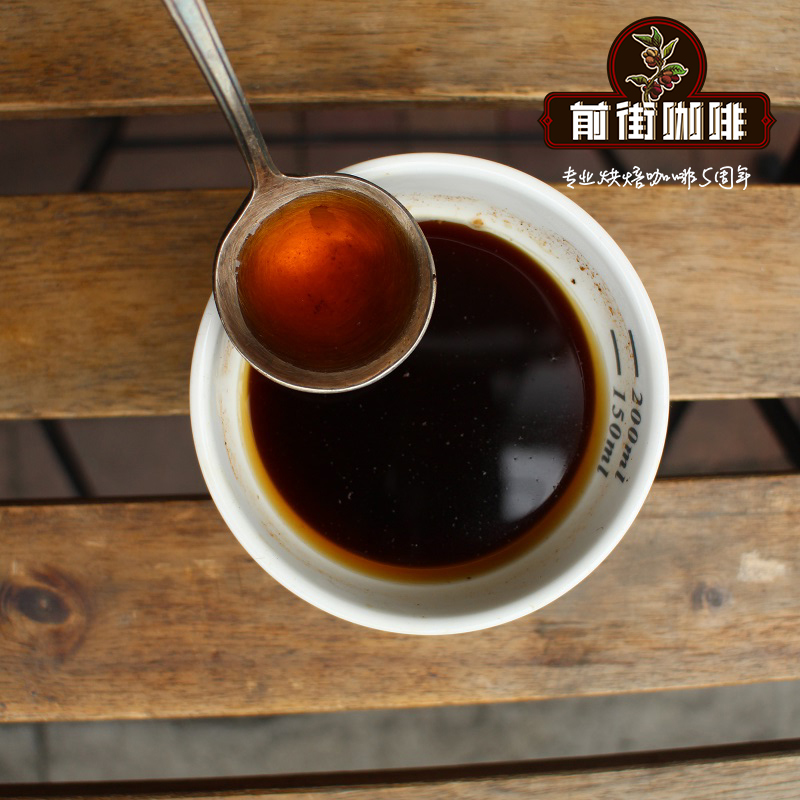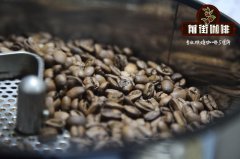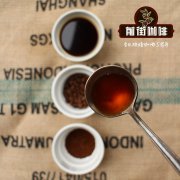Is the Saakastoume family good at the St. Vincent processing plant in Honduras?
San Vincent processing Plant in Honduras, is the Parainema washed coffee of the Saakastoume family good?

Flavor description: floral aroma, vanilla, maple syrup
Delicate acidity and soft finish of virgin tomatoes, grapes, limes and other fruits
Country of origin: Honduras (Honduras)
Producing area: Santa Barbara District (Santa Barbara)
Producer: St. Vincent treatment Plant (San Vicente)
Variety: Parainema species
Altitude: 1500 to 1900 m
Treatment: washing treatment
Rating: NCMA
Certification: NCMA
Introduction:
The largest coffee province in Honduras is the The Santa Barbara region, located in western Honduras, in Lake Yojoa.
In the northwest, the region has developed into a famous coffee producer in Honduras in the past few years. In the meantime, this area
From a famous agronomist Mr. Angel Arturo Paz, who owns a post-processing plant: St. Vincent
The San Vicente is located in the northern Santa Barbara province area (Santa Barbara) of Lake Yojoa in the west.
In the small town of Pena Blanca, he has always been the winner of the COE (Cup of Excellence) Cup in Honduras.
St. Vincent's processing plant acquires the surrounding towns of El Cielito, Las Flores and El Cedral (these places
Each place has at least 35 families and one school) coffee beans produced by small coffee farmers. Although because of the quantity
There are so few that it is usually difficult for these small farmers to produce separate batches, but the coffee produced in these regions is
It can still be amazing with high sweetness and fruity. San Vicente is a family business.
The processing plant is very famous in the local area. Because of assisting farmers to upgrade their planting technology and improve production equipment through projects
Committed to the close contact with the producers, and take the coffee cup test as a strict gatekeeper for each batch of products.
This batch of coffee beans is named "Parainema". The coffee of Parainema is a kind of coffee through mating.
And cultivate a new variety, which can prevent coffee leaf rust and nematodes.
Erosion. The improvement of coffee began in 1981 in a series of "producers' demands for disease and pets"
(known as Sarchimor Tmur5296) under the experiment. Improved coffee was first introduced in 2006-08.
It was planted in Costa Rica and then introduced to Honduras in 2010 and named Parainema.
Parainema coffee tree is a short shrub. Due to the family difference of the tree species it comes from, the leaf tip will be green.
, yellow, or a mixture of two colors. This batch of Parainema coffee raw beans
Rare species, plus Saint Vincent, the winner of the COE (Cup of Excellence) Cup in Honduras.
The treatment of the factory completely shows the high sweetness and fruit-like flavor of Honduran coffee.
Flavor features: delicate acidity and soft finish of tomatoes, grapes, limes and other fruits.
Among the 18 provinces in Honduras, 15 provinces are engaged in coffee production.
It is not too much to be an important cash crop and source of foreign exchange in Honduras. Coffee has been created in Honduras.
There are more than 1 million jobs, affecting the livelihood of many families. In the coffee garden of Honduras, regardless of
Men and women, we all pick coffee beans by hand and carefully handle and process coffee beans according to market demand to meet the needs of the market.
Different tastes of consumers. Honduras is also one of the most important boutique coffee producing areas in the world.
The coffee is of very good quality. The coffee varieties planted are 100% Arabica, of which 69% are Arabica.
Belong to HG class, 19% belong to CS class, 12% belong to SHG class; there are various varieties, such as Typica, Bourbon,
Caturra, Villa Sarchi and Lempira, etc. Coffee in Honduras mainly comes from six major producing areas.
These producing areas are distributed in the west and south, namely, Santa Barbara (Santa Barbara) and Periso.
(El Paraiso), Koban District (Copan), Baz District (La Paz), Gongmayagua District (Comayagua) and
In Olancho, the average height of planting in each producing area is more than 1100 meters.
In addition to producing quality coffee, Honduras also actively supports and invests in organic or rainforest alliance coffee beans.
For export, the quality of its coffee is not only first-class, but its price is also the most competitive among Central American countries.
Important Notice :
前街咖啡 FrontStreet Coffee has moved to new addredd:
FrontStreet Coffee Address: 315,Donghua East Road,GuangZhou
Tel:020 38364473
- Prev

Raw bean evaluation of Ethiopia Humbera Manor, Holy Lion Farm, baking method, how to drink well
Professional coffee knowledge exchange more coffee bean information please follow the coffee workshop (Wechat official account cafe_style) raw bean evaluation 014 Ethiopia Hambella Manor Holy Lion single Farm slow drying 105 batches of Ethiopia Humbera Manor Holy Lion single Farm slow drying 105 batches Ethiopia Hambela Benti Nenqua G1 Washed SFP Lot 105
- Next

Colombia Santo Arrio Manor Love Herbal Coffee Bean Flavor characteristics and rating
Colombia Santa Tuario Estate Love Elixir Flavor Features: Fruit juice, orange, floral, plum, honey, thick, fruity floral flavor, sweet and persistent finish. Country of Origin: Colombia Region of Origin: Cauca Cali Farm: Finca Santuario Heliconias Species: Red Bourbon
Related
- Detailed explanation of Jadeite planting Land in Panamanian Jadeite Manor introduction to the grading system of Jadeite competitive bidding, Red bid, Green bid and Rose Summer
- Story of Coffee planting in Brenka region of Costa Rica Stonehenge Manor anaerobic heavy honey treatment of flavor mouth
- What's on the barrel of Blue Mountain Coffee beans?
- Can American coffee also pull flowers? How to use hot American style to pull out a good-looking pattern?
- Can you make a cold extract with coffee beans? What is the right proportion for cold-extracted coffee formula?
- Indonesian PWN Gold Mandrine Coffee Origin Features Flavor How to Chong? Mandolin coffee is American.
- A brief introduction to the flavor characteristics of Brazilian yellow bourbon coffee beans
- What is the effect of different water quality on the flavor of cold-extracted coffee? What kind of water is best for brewing coffee?
- Why do you think of Rose Summer whenever you mention Panamanian coffee?
- Introduction to the characteristics of authentic blue mountain coffee bean producing areas? What is the CIB Coffee Authority in Jamaica?

